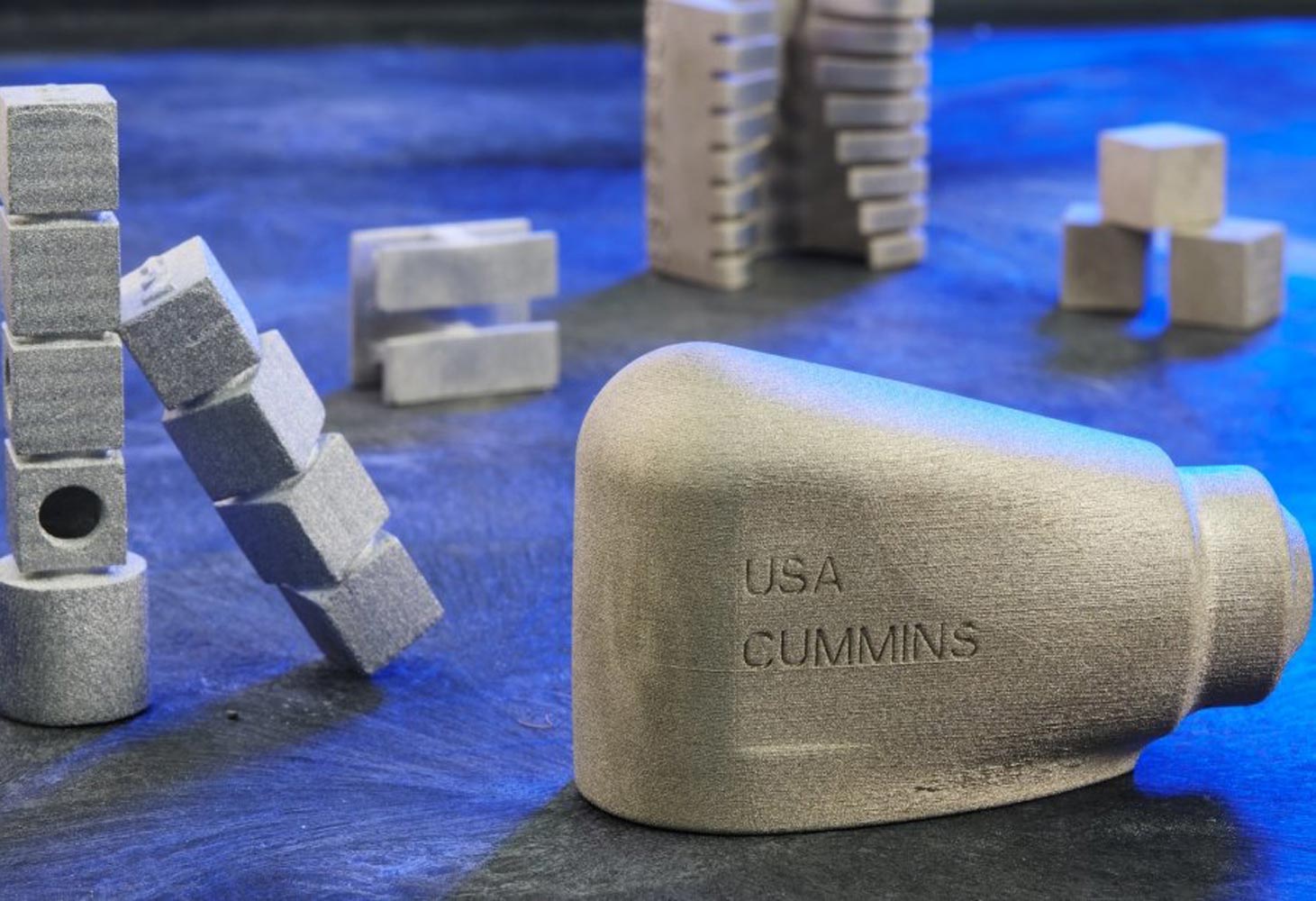
Cummins finalizing first metal production part using 3D printing
Cummins Inc. said it is finalizing its first production part using a new, high-precision 3D metal printing technology called binder jet. This marks a significant milestone in the company’s additive manufacturing and Industry 4.0 journey.
The part, a Cummins Emission Solutions (CES) lance tip adapter used in high horsepower engines, is now moving through Cummins’ production part approval process (PPAP) for formal approval. The lance tip adapter, a critical emissions component in Cummins engines, atomizes and injects diesel exhaust fluid (DEF) into the engine exhaust stream to reduce the amount of nitrogen oxides (NOx) emitted from Cummins’ engine systems.
“This is incredibly exciting, as it signifies yet another significant milestone in our 3D and additive manufacturing roadmap,” said Tim Millwood, vice president of Global Manufacturing. “We’re on the cusp of being able to leverage a broad range of additive technologies to print the parts we need, using the right technology and at lower costs and increased speeds.”
Producing this part through additive manufacturing provides several additional benefits, including a lighter-weight design, improved geometry for fluid and air flow, and the elimination of the added complexity of cross-drillings. The company hopes to have final approval of the part and to start official production later this year.
In April 2019, Cummins announced its investment in binder jet technology, where a print head moves across a bed of powdered metal and selectively deposits a liquid binding agent in the shape of the part cross section, bonding these areas together to form a solid part one layer at a time. Depending on the complexity of the part, the technology can print 60 to 100 times faster than other laser-based printing processes, allowing high-volume production with this technology.
Binder jet technology also has environmental benefits. Unlike traditional machining, the binder jet printer can take nearly 100% of the leftover powder from the printed part, recirculate it through the system and reuse it in the production of other parts.
In 2020, Cummins established an Additive Manufacturing Lab within the company’s Manufacturing Engineering Development Center (MEDC) in Columbus, Indiana, U.S.A. The purpose of the lab is to develop and validate the industrialized binder jet additive manufacturing process. Cummins’ Engineering teams are taking this opportunity to gain experience and skillset in designing for additive manufacturing as the technology advances.
Currently, the Cummins Additive Manufacturing and Engineering teams are working on designing and printing several additional concept parts, with the hopes of finalizing more parts yet this year. Cummins currently has two second-generation binder jet printers, one at its Additive Manufacturing Lab in Columbus, Indiana and one at GE Additive’s Disruptive Innovation Lab near Cincinnati, Ohio, U.S.A.
Cummins and GE Additive are actively partnering to develop third-generation binder jet technology, which will support an industrialized solution with even higher throughput, improved quality and lower cost.
“This is the first of many milestones. The focus of our partnership is to productionize applications at cost, quality and needed scale. We are proud to work with Cummins to develop additive technology and provide meaningful return on investment throughout its supply chains,” said Jacob Brunsberg, Binder Jet product line leader, GE Additive.














